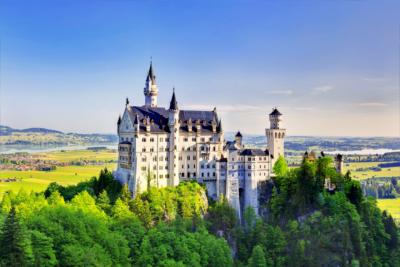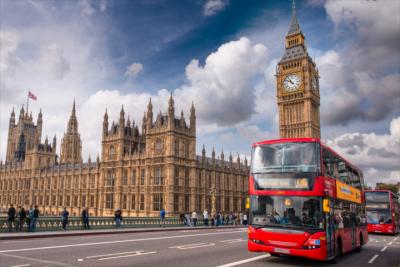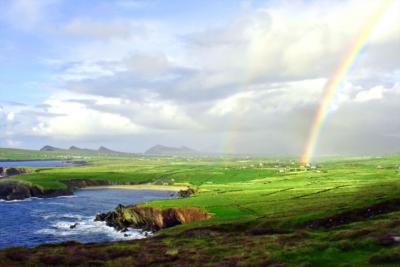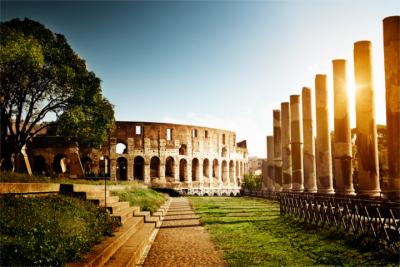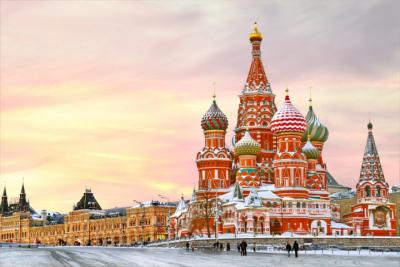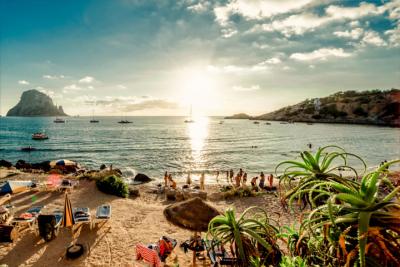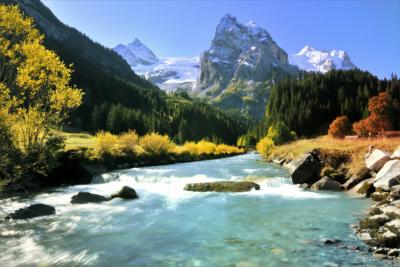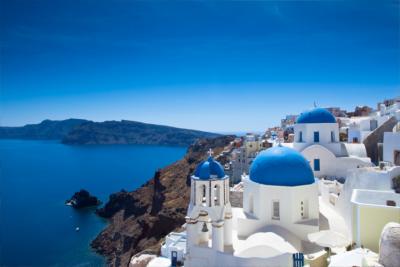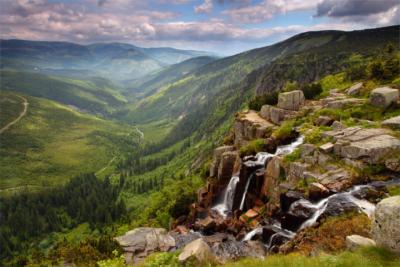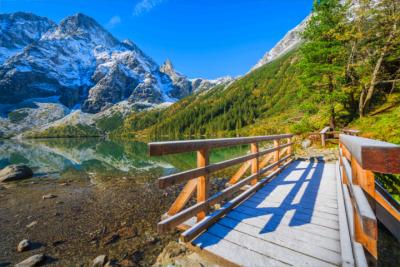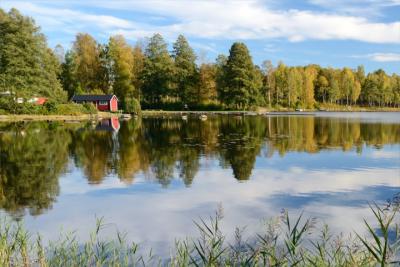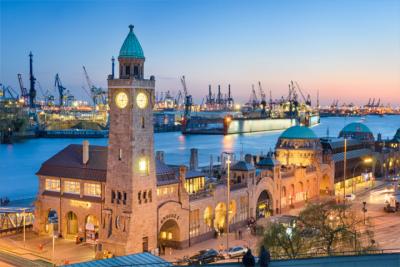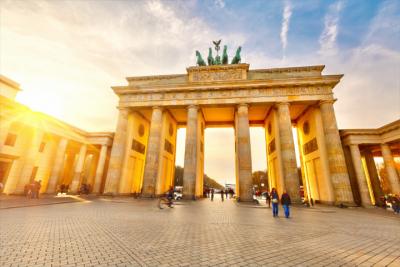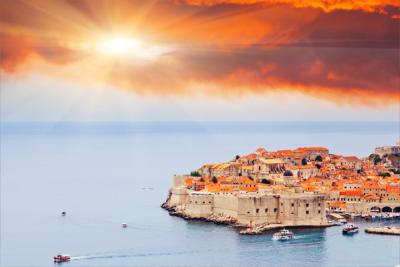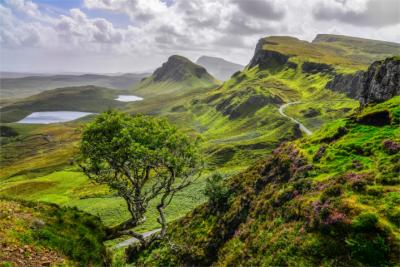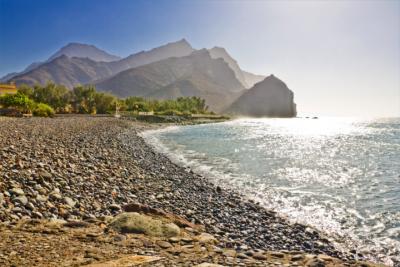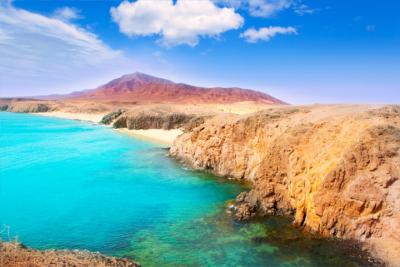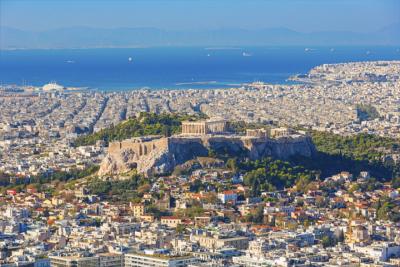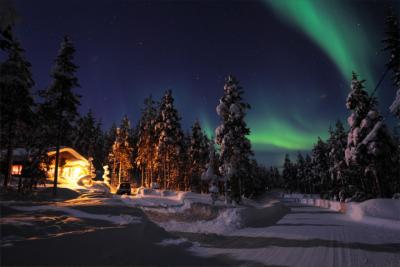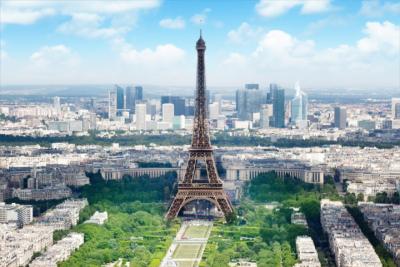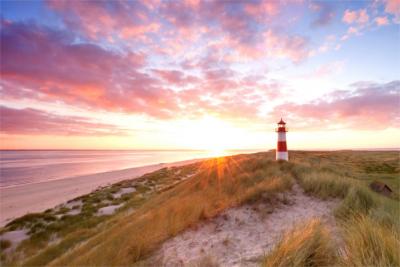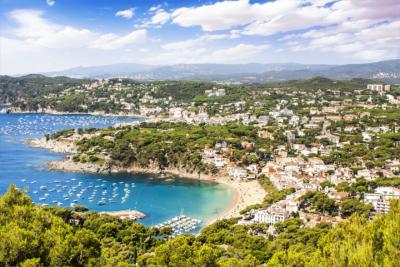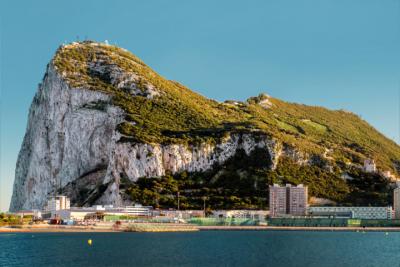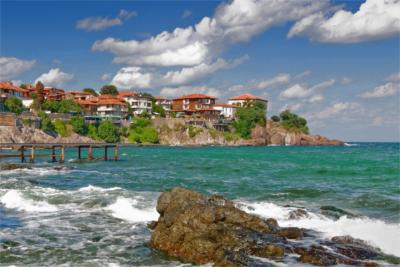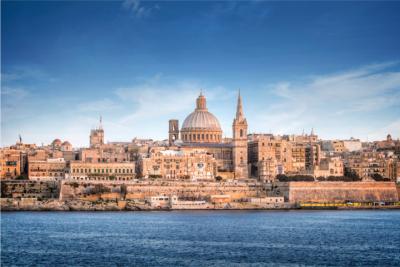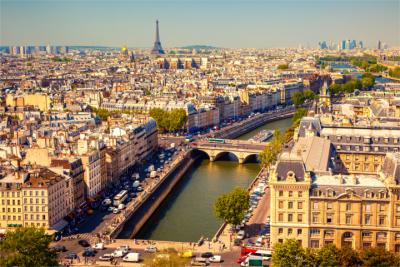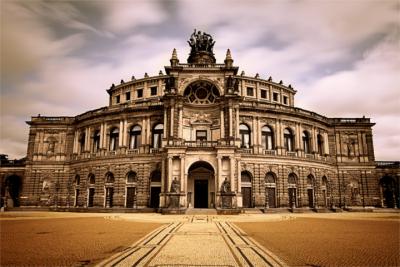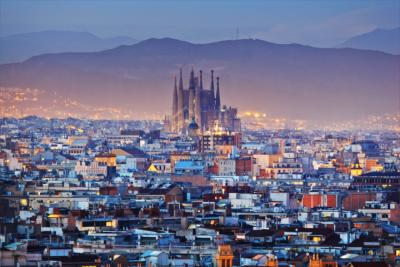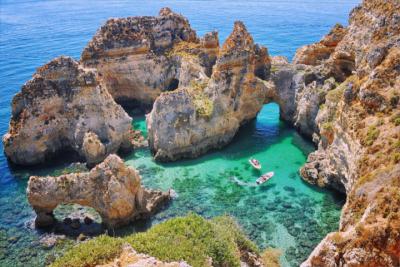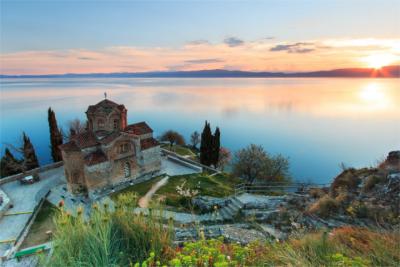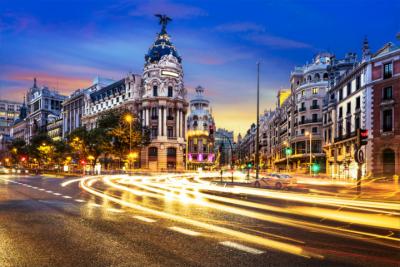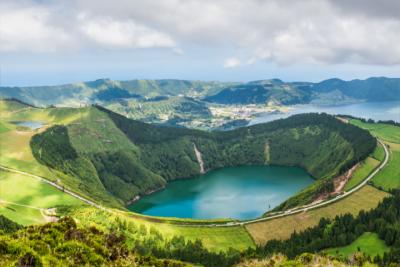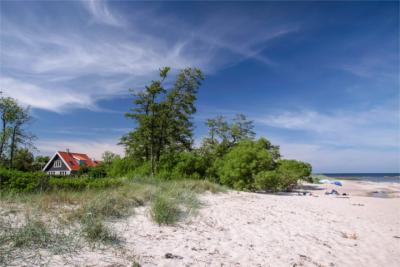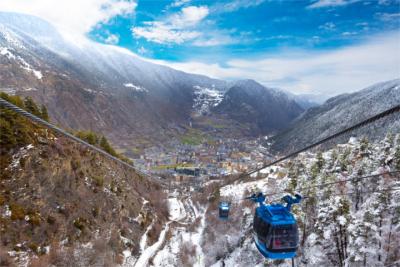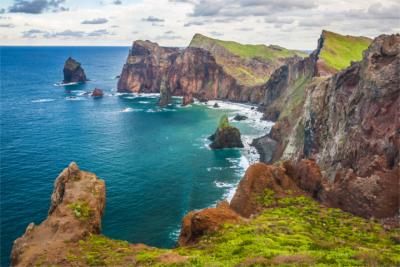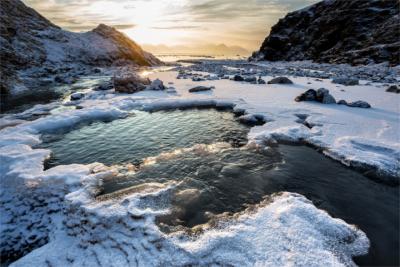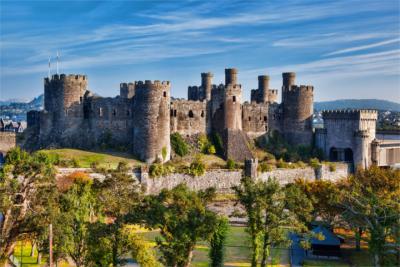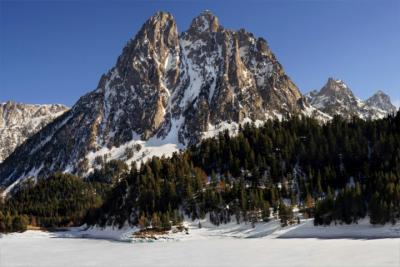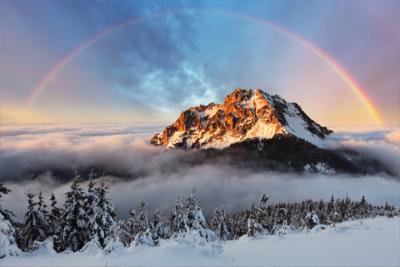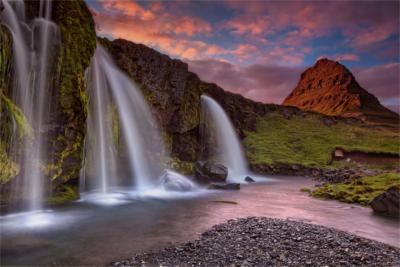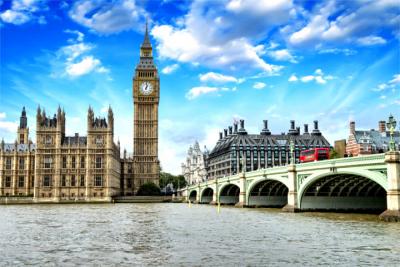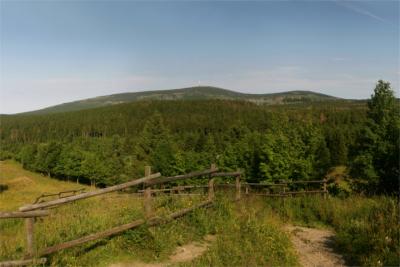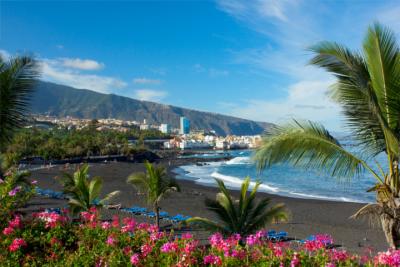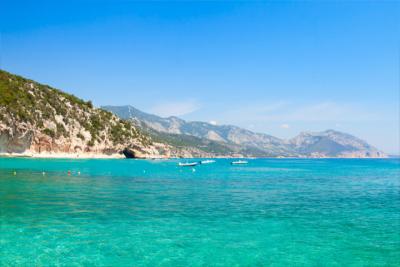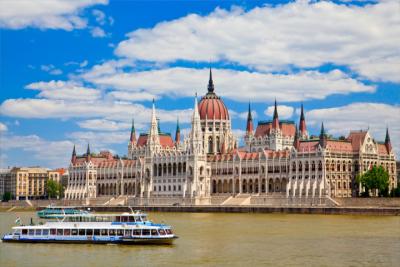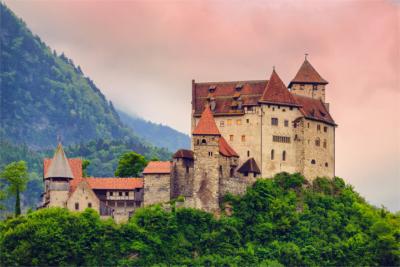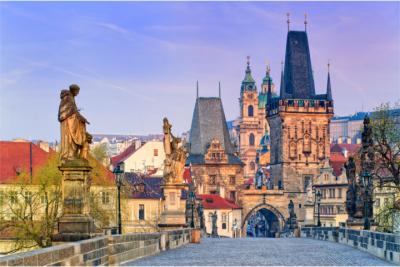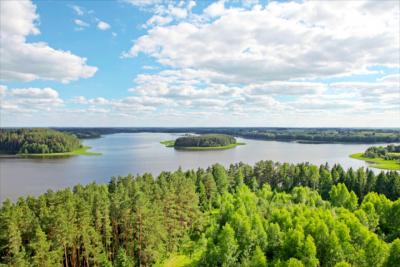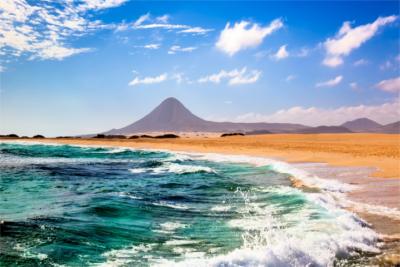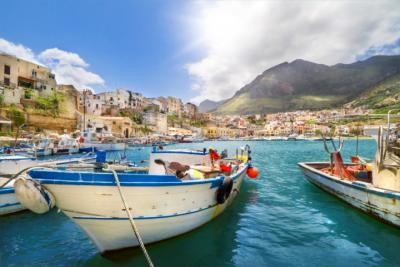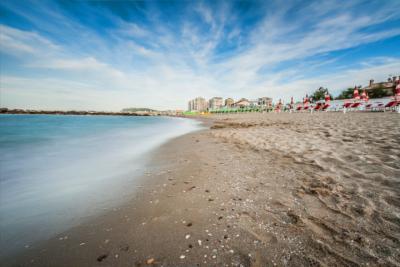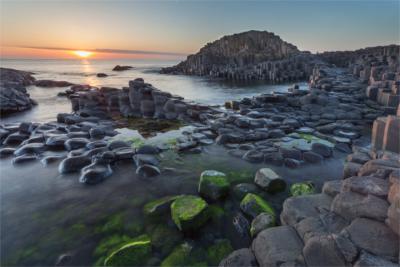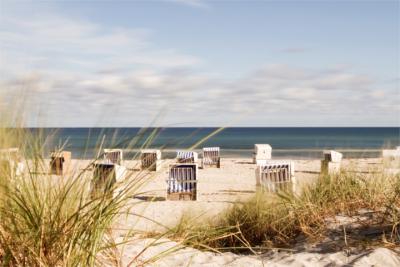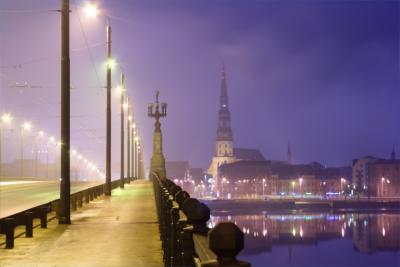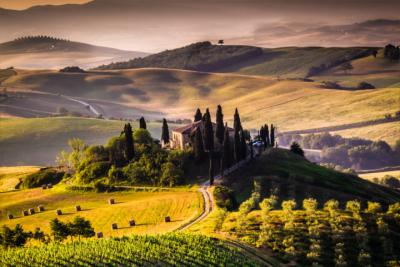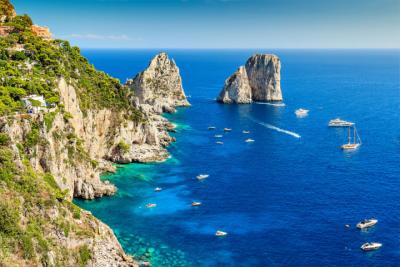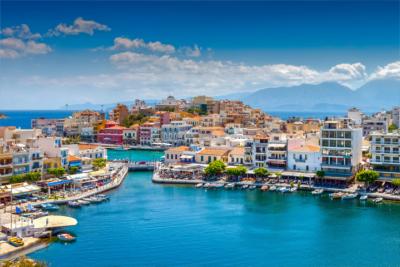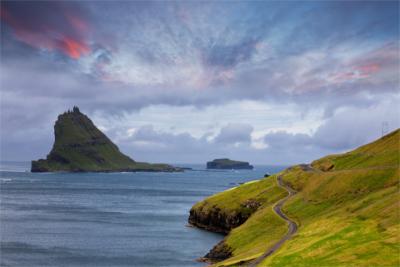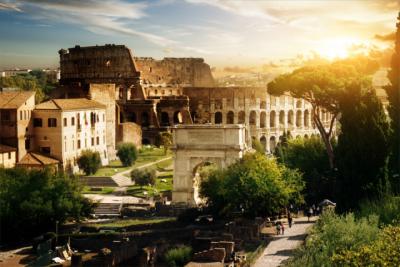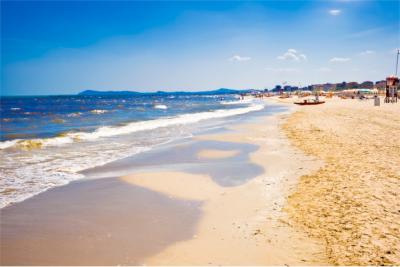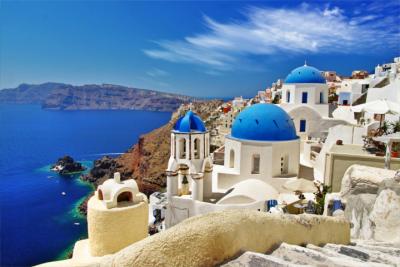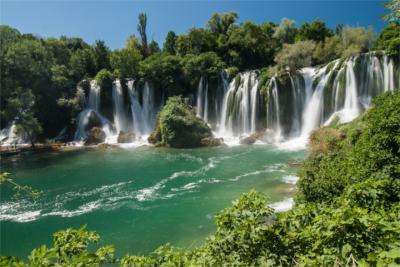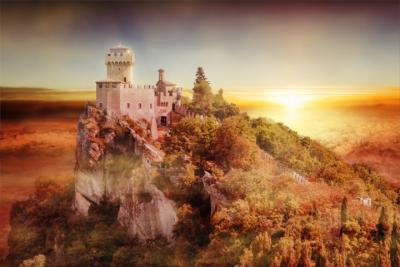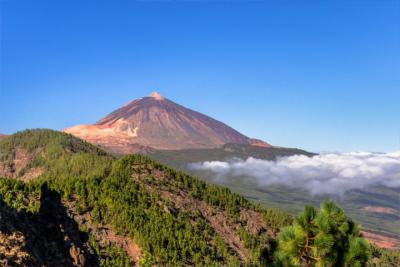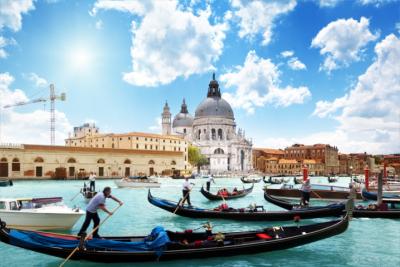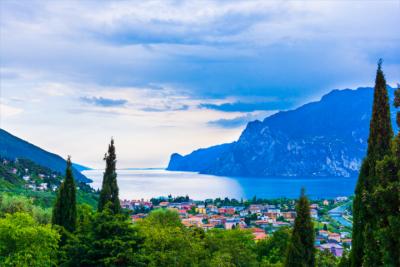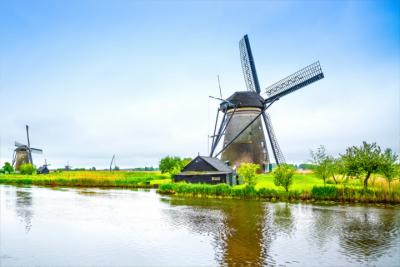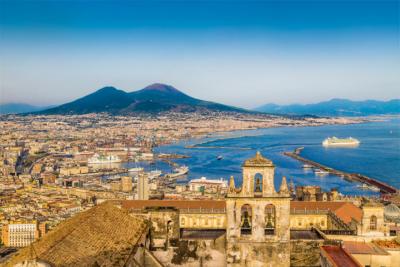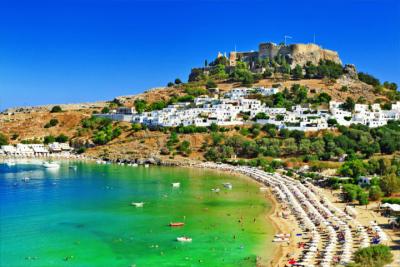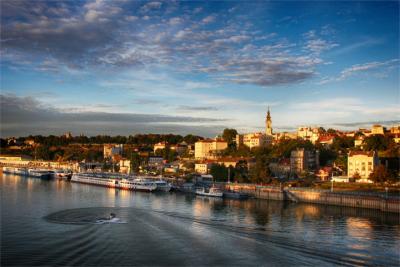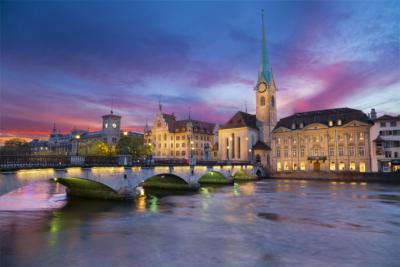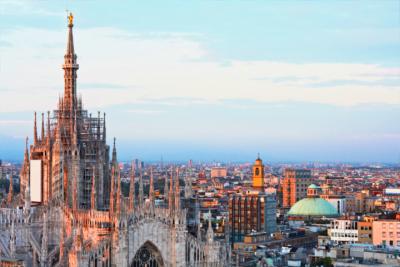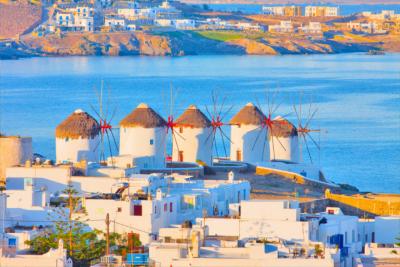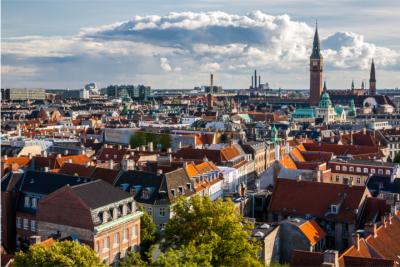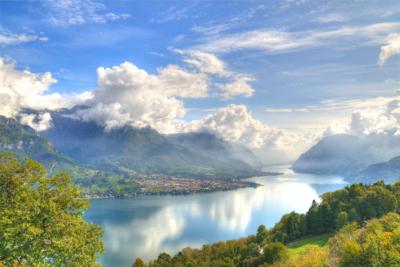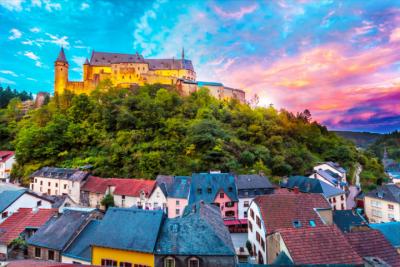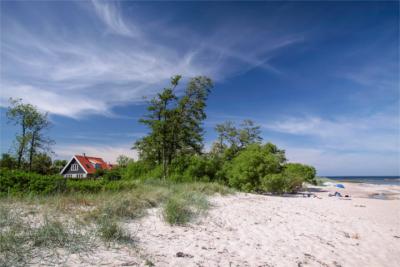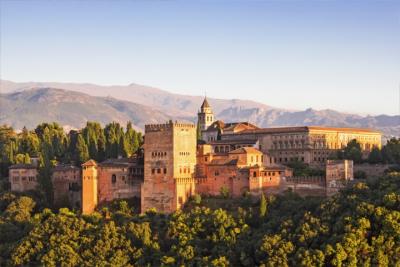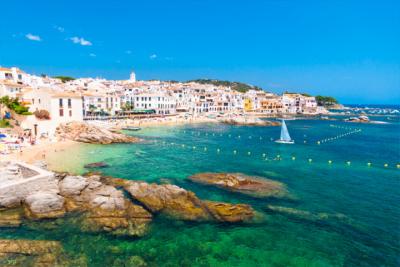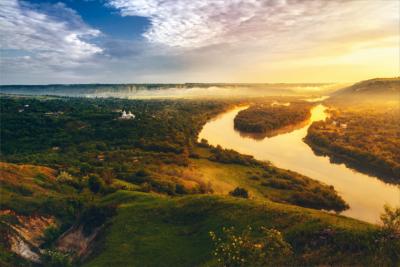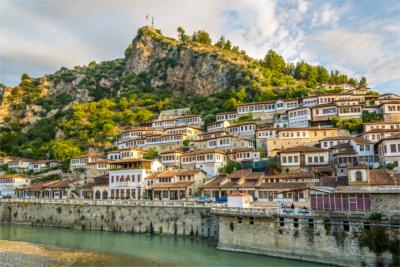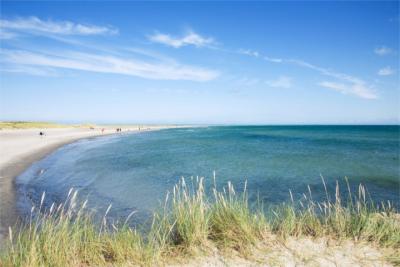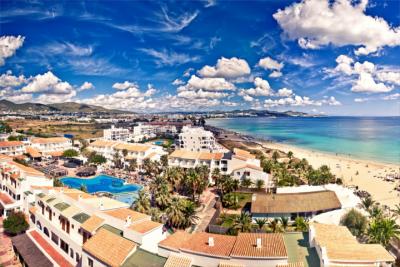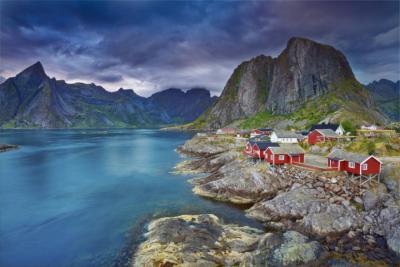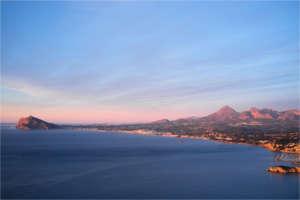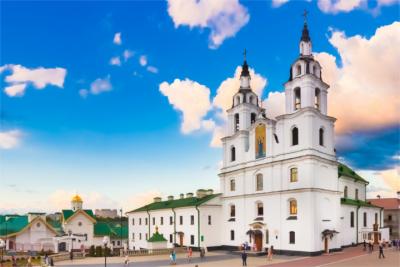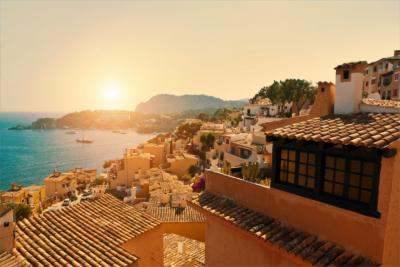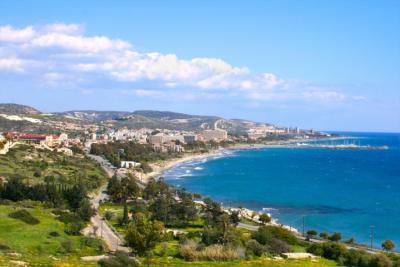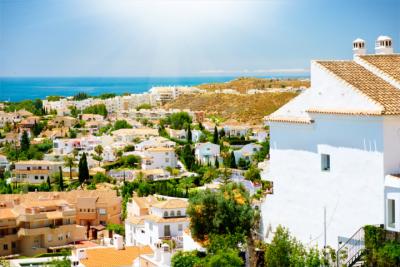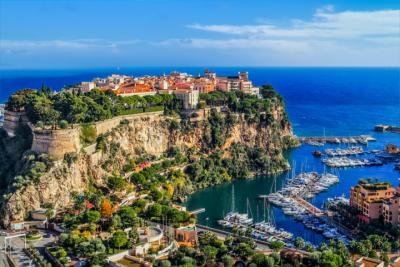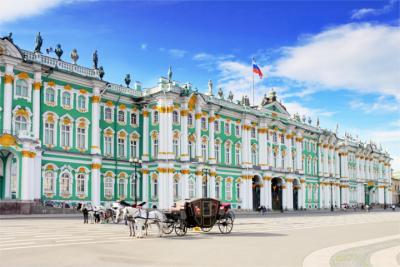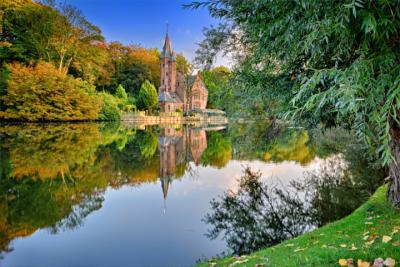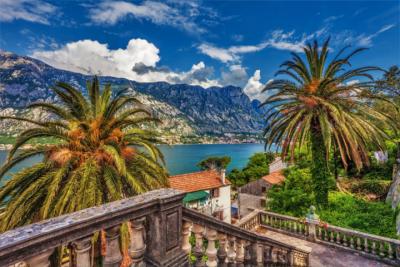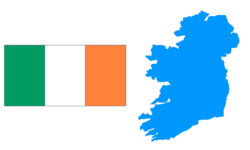Travel Offers
Travelmyne Featureprint
Distance
Ireland - The Emerald Island in the Atlantic
High cliff coasts, vast meadows and a pot of gold at the end of the rainbow allure romantics and lovers of nature to the beautiful island in the Atlantic Ocean. The Irish hospitality and the sociability of the pubs are a must for every adventurer and culture enthusiast.

Geography - Harsh cliffs and smooth hills
Ireland lies in the north-west of Europe in the Atlantic Ocean. The Irish island is divided into two political parts: the Republic of Ireland and Northern Ireland, which is part of the United Kingdom. In the east you see the Irish Sea, over which travellers reach the British island. The Celtic Sea separates Ireland from the European mainland in the south. The Republic of Ireland comprises four provinces: Connacht, Leinster, Munster and Ulster. These are again divided into a number of counties. The country's capital and cultural centre is Dublin at the east coast. Ireland's landscape is characterised by harsh rocky cliffs at the sea and the smooth hilly but fertile plains in the heartland, which are a result of the climate. Typical of the islands, especially of the west, is the rain. You find the highest precipitation between August and January. In late summer, there may be heavy thunderstorms. The time from May to June is considerably more sunny with up to seven hours of sunshine per day. Altogether the climate is temperate.

Nature - The magic of the shamrock
A harsh coastline, remote bays and steep cliffs, which almost drop vertically - this is the typical image of the Irish coast. Before it you find numerous small island and peninsulas, which still display nativeness. The heartland, on the other hand, is covered in hilly moorland and heath. Sheep browse smooth meadows and fertile plains with herbs and wild flowers stretch for miles. Scenic lakes like Lough Corrib complement the image. The Shannon is the country's longest river with a length of 370 kilometres. In the centre of the island, the landscape changes to mountain ranges. Ireland's highest mountain is the Carrantuohill with 1,041 metres of height. It is located on an island of the Macgillycuddy's Reeks. The landmark and unofficial national symbol of the Irish is the clover - called shamrock. White and suckling clover are the most common types of clover on the island. If you want to take home one of these little plants as a souvenir, you do not have to go looking for the rare four-leaved ones. The symbol of Saint Patrick always has three leaves. There are six national parks in Ireland. They are home to the few remaining species of mammals. Among them are bats, badgers and more rarely foxes and red deer. The coasts and islands are populated by marine and migrating birds. Travellers who are interested in the sea dwellers are in good hands in Ireland. Throughout the year the waters around the island are filled with different types of whales and dolphins. In addition, you can watch a number of rare species passing through at particular times of the year.

Natural sights - Spooky romance at the Cliffs of Moher and Connemara
Ireland's landforms alone are worth a visit. The cliffs at the seaside, the heath behind them and the mountains in the centre enchant countless tourists every year. The Glenveagh National Park lies in Donegal in the far north of the country and contains a coastline of 370 kilometres of length. Both seen from above and from the beach the gigantic cliffs send a chill down one's spine. The old, native Ireland is still alive in this region. Even the mother tongue Gaelic is still spoken here. An absolute highlight are the Cliffs of Moher at Clare Coast. The green rocks look especially impressive if you watch them from a boat. Romantics are drawn to Connemara in the region Galway. Its deserted and wild peat bogs and the peninsula with its wonderful bays have inspired many poets. You find the most beautiful gardens in Enniskerry in the Powerscourt House and Garden. This Italian-style garden has an area of 18 km² and holds over 200 types of plants and flowers.

Culture - Christian towers in the land of the Celts
Although the first settlers already reached the island in the Atlantic 7000 BC, the Celts were the first ones to make themselves felt. They arrived around 300 BC and did not just bring their culture but also their Celtic language. In the course of the Christianisation in the 5th century, many monasteries and castles with the typical round towers were built. It was not until the year 800 that this enthusiasm for construction decreased. This was the time when the Vikings invaded the country. The entry of the Normans was equally devastating. The resulting conflict with England is still existent in some parts of the country. Especially the north of the island, the present-day territory of Northern Ireland, suffered from this. Ireland gained more independence with the foundation of the Irish Free State after World War I. As the conflict with Northern Ireland continued, the island was finally divided into two parts and Northern Ireland became a part of the United Kingdom. The cultural centres are now located inDublin, Cork, Limerick and Galway. Over 30 main and almost 350 branch libraries bear witness to the country's cultural power. Several famous writers such as Samuel Beckett, Oscar Wilde, Bram Stocker and of course James Joyce come from the Ireland. The Irish are a hospitable and cordial nation. Especially Dublin's inhabitants are sociable and open. However, visitors should never call an Irish person British. Many an insensitive speaker has wounded the marked national pride and has had to leave the pub in disgrace.

Cultural sights - Bloomsday, the Book of Kells and the Blarney Stone
The capital Dublin is not only the country's heart but also most travellers' first stopping point. Anyone should have passed the Samuel Beckett Bridge, which was named after the famous writer, at least once. You already notice how closely the bridge resembles a harp from afar - another national symbol of the Irish. Dublin is the city of the poets and thinkers. This is especially apparent on the 16th of June - on Bloomsday. Already in the early morning hours you see lovers of literature wearing straw hats and umbrellas, who experience the story of Leopold Bloom first-hand. The author James Joyce would probably never have dreamed that his novel Ulysses would become one of the best-known and most popular events of the year - the Bloomsday Festival. You also find the time-honoured Trinity College in Dublin. The university was already founded in the 16th century and is the guardian of the "most beautiful book on earth" - the Book of Kells. Another centre of art and culture is Cork. Its numerous museums, exhibitions and galleries make art lovers' hearts leap for joy. There are castles from the 15th and 16th century all over the island. Particularly worth seeing are Bunratty Castle in Clare, Dromoland Castle of the O'Brien family and Blarney Castle in Cork. Travellers who visit the latter should climb up the stairs to the legendary Blarney stone. It was probably carried to this place from Scotland in 1314 but this is not sure. Today, a kiss is said to bring luck and contentment. Other worthwhile attractions are Kinsale harbour - one of the country's culinary centres - and the ruined town Glendalough in County Wicklow.

Experience - The Irishman is only an Irishman in the pub
To experience a country most of all means getting to know its cuisine. This can best be done in the Ballymaloe House in the rural Shanagarry. This medieval castle owes its good reputation to its owner and chef Myrtle Allen. Two of the best-known Irish dishes are the Irish stew (a vegetable stew) and of course the scones. This delicious pastry is often served for dessert. Much more famous than the dishes are the Irish drinks. Visitors can taste Irish whiskey in a number of distilleries. Besides types of beer, you can also get the Irish Guinness in the pubs, which is the country's national drink. The writer Joyce was so delighted with the art of brewing that he called Guinness "the wine of Ireland". The nightlife also mainly takes place in the pubs. There are over 1,000 pubs in Dublin alone. Live music and Irish folk make this experience a special one. Sports events are also enjoyed in front of the screen in the pub. Besides Irish folk, Riverdance shows are very popular with visitors. The Irish are generally considered to be musical. Besides the Jazz Festival in Cork in autumn, the national holiday St. Patrick's Day came to international fame. The shopping facilities in Dublin are equal to those of other western cities. You find shopping centres, shopping miles and supermarkets everywhere. The smaller markets are more original and sell typical Irish products. The most popular souvenirs are the shamrock, the whiskey, clothing made of tweed, pastry and handicraft.

Activities - Hikes along the coast, whale watching and football
Ireland is excellently suited for hiking and walking. Travellers should not forget their raincoat when they are on the towpaths or the 31 long-distance trails at the coast, in the mountains or in the heath. A drive along the Ring of Kerry offers a breathtaking mountain backdrop and a fantastic panorama for future professional photographers. The route is 179 kilometres long and provides countless opportunities for spectacular pictures. Furthermore, Ireland is one of the best country's for golfing. The plains as well as the many old castles and ruins constitute a unique backdrop. The water around the Irish island also attracts many holidaymakers. There are many places in which you can go bathing and do water sports in summer. In addition, Ireland is a great starting point for a whale watching tour. The bodies of water within the country are also appealing. Adventurers can explore the country in a houseboat on the river Shannon. However, the favourite sports of the Irish are football and hurling. Visitors should at least have seen one football match to see the true nature of the Irish people.

Information
The English language and the euro as the currency make this country an uncomplicated destination for visitors from Europe. But travellers from more distant countries also have a lot to look forward to on the open-hearted island. The country's well-developed infrastructure makes it possible to reach all cities and sights. Ireland has a number of international airports. The most important one is located near the capital Dublin. If you want to rent a car, you have to bear in mind that there is left-hand traffic on the island.
Ireland is the home of poets and a centre of attraction for lovers of literature and educational travellers to the present day. Lovers of nature get their money's worth in the country's varied landforms or during whale watching tours. If you love going out and celebrating, you will feel at home in the Irish pubs with a pint of Guinness.

